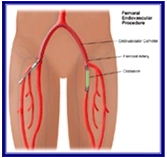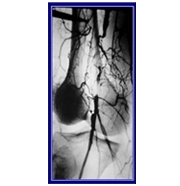Lower Limb Arterial Angioplasty

Femoral Artery Angioplasty
The femoral artery is the longest artery in the body, and most commonly affected due to peripheral arterial disease. The narrowings may be short and discrete, or there may be evidence of very long segment total occlusions. With current interventional techniques, the results of angioplasty and stenting of the femoral artery are very encouraging, even in diabetic patients.

Iliac Artery Angioplasty
Results of angioplasty and stenting in the Iliac arteries are long-lasting, as good as surgery. The most common symptom of narrowing of the iliac arteries is pain in the lower back or thigh, especially on walking. Very severe stenosis or sudden occlusion may lead to severe ischemia of the entire limb, and occasionally leads to gangrene and amputation.

Below Knee Artery Angioplasty
The arteries below the knee joint (the anterior tibial artery, the posterior tibial artery, and the peroneal artery) are smaller sized vessels. Disease in these end vessels may result in severe pain in the calves, and may lead to ulcer formation in the toes, gangrene in the toes and foot, and eventually amputation. Angioplasty in these arteries has to be carefully performed, as these arteries are excessively sensitive (like the arteries of the heart). However, the results are very gratifying.
